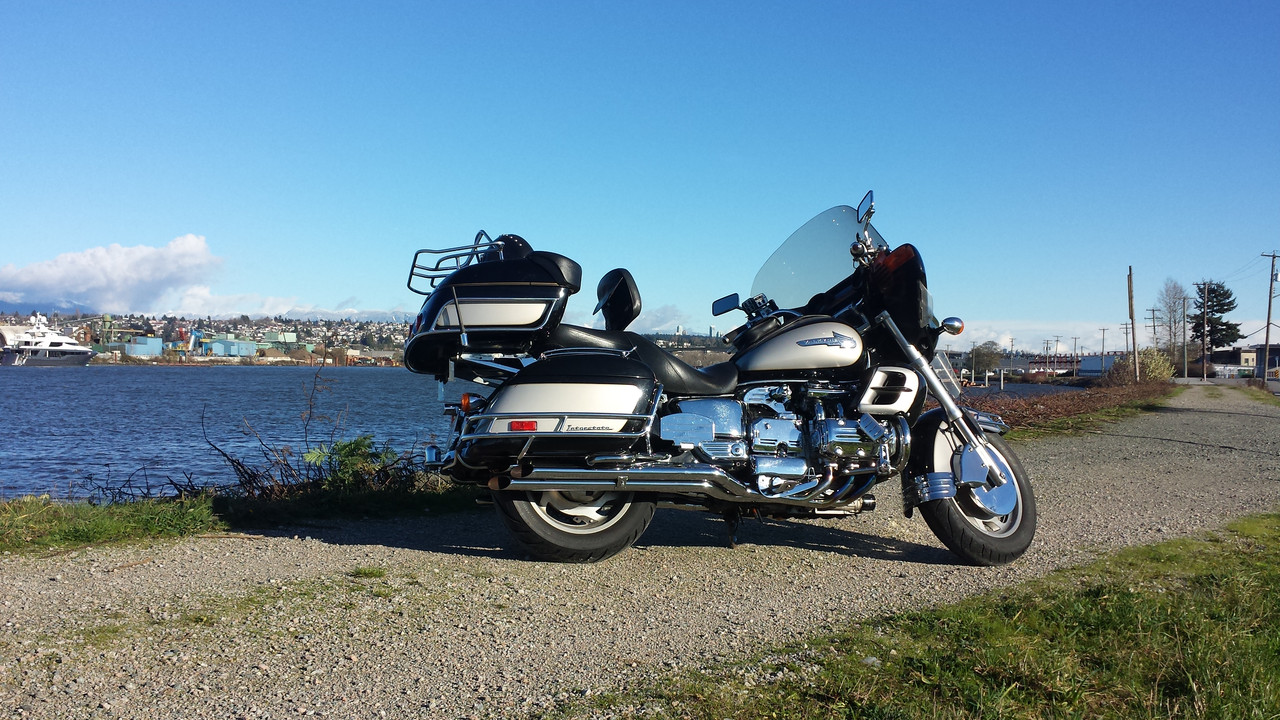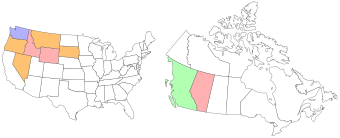|
N0tac0p
|
 |
« on: April 04, 2011, 03:05:50 AM » |
|
i rebuilt the front caipers on my IS. i then pumped for probaly an hour (and fluid did appear to go down slowly), bu tstill nothing. fluid is slow to come, I have the bottle set up with the bleeder tube in oil, but i still see the oil in the tube only coming about 3 inches out of the caliper and then just accordioning (back/forth) with no "force" of oil coming thru. is this typical? how does a pump bypass the valve in the handle to pull fluid out of hte resivior?
|
|
|
|
|
 Logged
Logged
|
|
|
|
|
Blackduck
|
 |
« Reply #1 on: April 04, 2011, 06:13:51 AM » |
|
Not having a Mity Vac or similar means old school bleeding.
Loosen the bleed screw then just tighten so it will not leak, have the drain/bleed hose on it.
Pump up the brakes, hold in and loosen the bleeder. After the pressure/ fluid bleeds off close the bleeder and slow let the handle off. Pump up the brakes again and repeat.
If it still feels a little spongy try turning the handle bars to the left ( bike on side stand) so the master cylinder is at the highest point and and slowly pump up the brakes. This will let any trapped air bleed back to the master cylinder, it will be slow but the air will bleed back.
Cheers Steve
|
|
|
|
|
 Logged
Logged
|
2001 Standard, 78 Goldwing, VRCC 21411
|
|
|
|
Ricky-D
|
 |
« Reply #2 on: April 04, 2011, 08:09:59 AM » |
|
There is no way you will be able to pump up the system. You simply have too much air in the system.
You should hand fill the calipers and take the banjo's loose and fill the lines all in order from the lowest to the highest until you have filled everything as full as you can.
Turn the bars and if you can have the bike upright it would be a help but take your time to fill up everything as best you can. Don't try to use the master cylinder to charge the complete system, it's just too difficult.
After you have filled everything you can look inside the reservoir and see the relief port in the bottom of the bowl. If you pull the lever ever so slightly you will see a bubble appear in the bottom of the bowl at the port and releasing the lever you will allow the bubble to rise to the surface.
Continue to do this until no more bubbles appear. Remember it is a slight pulling of the brake lever that will cause the bubbles to appear. You may have to practice and adjust your pulling motion to get the correct response from the master cylinder. Also, you may not get the bubbles to come at a fast clip but instead have to wait a moment or so between the pumps.
When the first step is completed you can then proceed to bleed the system while all the time continuing to check for more bubbles coming from the relief port. Bleed the caliper with a single stroke of the brake lever. Continue the bleeding to a point to where you start to feel some resistance in the lever. Remember here that you don't pump the lever but merely squeeze it a full stroke and hold it while allowing the compressed air to escape the brake caliper. Always look for bubbles coming out at the relief port.
Maintain the proper fluid level in the reservoir while bleeding the brakes.
If you take a good and proper procedure and stick with it you will have your good brakes back again.
***
|
|
|
|
|
 Logged
Logged
|
2000_Valkyrie_Interstate
|
|
|
|
9Ball
|
 |
« Reply #3 on: April 04, 2011, 01:01:23 PM » |
|
you can also fill a large syringe with fresh brake fluid, attach surgical tubing to the nipple of the syringe, bleed the air out of the syringe and tubing, attach tubing to your wheel bleeder, and slowly force brake fluid up into the lines. Make sure there is room for the fluid in the master cylinder so you don't overflow it. You'll see major air bubbles come out in the master cylinder and you are working with the nature of the bubbles to rise out of the system. Slow even pressure so you don't pop the tubing off.
This works well on new hoses and rebuilt cylinders.
|
|
|
|
|
 Logged
Logged
|
VRCC #6897, Joined May, 2000
1999 Standard
2007 Rocket 3
2005 VTX 1300S
|
|
|
|
N8171S
|
 |
« Reply #4 on: April 04, 2011, 01:07:54 PM » |
|
On my airplane I fill a clean pump oil can and refill the calipers and resevoirs from the bleeder. I don,t see why that wouldn't work on the valkyrie. Just be careful not to overflow the resevoirs.
|
|
|
|
|
 Logged
Logged
|
|
|
|
|
Bobbo
|
 |
« Reply #5 on: April 04, 2011, 01:58:45 PM » |
|
On my airplane I fill a clean pump oil can and refill the calipers and resevoirs from the bleeder. I don,t see why that wouldn't work on the valkyrie. Just be careful not to overflow the resevoirs.
you can also fill a large syringe with fresh brake fluid, attach surgical tubing to the nipple of the syringe, bleed the air out of the syringe and tubing, attach tubing to your wheel bleeder, and slowly force brake fluid up into the lines. Make sure there is room for the fluid in the master cylinder so you don't overflow it. You'll see major air bubbles come out in the master cylinder and you are working with the nature of the bubbles to rise out of the system. Slow even pressure so you don't pop the tubing off.
This works well on new hoses and rebuilt cylinders.
Like most calipers, the brake hose is lower than the bleeder valve, which is usually at the highest point on the pistons. By forcing brake fluid into the bleeder, you may not fully fill the caliper piston chamber. If you use this method, I would recommend a traditional bleed afterward to remove any air pockets. |
|
|
|
|
 Logged
Logged
|
|
|
|
gordonv
Member
    
Posts: 5763
VRCC # 31419
Richmond BC
|
 |
« Reply #6 on: April 04, 2011, 03:05:48 PM » |
|
Someone posted somewhere (here or another forum) that they bought the Mitty Vac from Harbor Frieght, I think on sale for $25. Cheaper than I paid for my cheap no name.
By one, and lend it to your fellow local riders, or check your local pals first and see if they have one.
|
|
|
|
« Last Edit: April 04, 2011, 07:19:47 PM by gordonv »
|
 Logged
Logged
|
1999 Black with custom paint IS   |
|
|
|
9Ball
|
 |
« Reply #7 on: April 04, 2011, 03:30:46 PM » |
|
On my airplane I fill a clean pump oil can and refill the calipers and resevoirs from the bleeder. I don,t see why that wouldn't work on the valkyrie. Just be careful not to overflow the resevoirs.
you can also fill a large syringe with fresh brake fluid, attach surgical tubing to the nipple of the syringe, bleed the air out of the syringe and tubing, attach tubing to your wheel bleeder, and slowly force brake fluid up into the lines. Make sure there is room for the fluid in the master cylinder so you don't overflow it. You'll see major air bubbles come out in the master cylinder and you are working with the nature of the bubbles to rise out of the system. Slow even pressure so you don't pop the tubing off.
This works well on new hoses and rebuilt cylinders.
Like most calipers, the brake hose is lower than the bleeder valve, which is usually at the highest point on the pistons. By forcing brake fluid into the bleeder, you may not fully fill the caliper piston chamber. If you use this method, I would recommend a traditional bleed afterward to remove any air pockets. absolutely...this is just a method to get the majority of the air out of the lines....definitely bleed the traditional way afterwards until you get the proper feel and operation. |
|
|
|
|
 Logged
Logged
|
VRCC #6897, Joined May, 2000
1999 Standard
2007 Rocket 3
2005 VTX 1300S
|
|
|
|
Blackduck
|
 |
« Reply #8 on: April 04, 2011, 05:44:09 PM » |
|
You do not need to undo every joint to bleed a system.
Doing so just spreads brake fluid every where and we all know what brake fluid does to paint work.
Have been bleeding brake,clutch and hydraulic systems for over 40 years and never had any problems. The occasional system you have to loosen a hose or pipe when the bleeder is at a lower point than the hose.
Cheers Steve
|
|
|
|
|
 Logged
Logged
|
2001 Standard, 78 Goldwing, VRCC 21411
|
|
|
John Schmidt
Member
    
Posts: 15240
a/k/a Stuffy. '99 I/S Valk Roadsmith Trike
De Pere, WI (Green Bay)
|
 |
« Reply #9 on: April 04, 2011, 05:54:57 PM » |
|
First, be sure to cover any painted surfaces that are underneath the reservoirs. A couple layers of plastic and a towel folded over on top. Plus, I always take a shop rag and wrap it in and around the handlebar and master cylinders. Second thing to remember, bleed the caliper farthest away from the master cylinder first. Usually on the Valk, that means bleed the left front first.
|
|
|
|
|
 Logged
Logged
|
|
|
|
|

